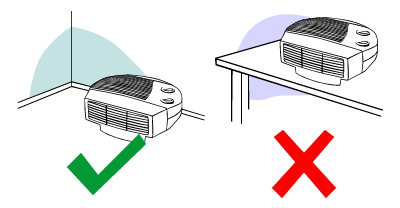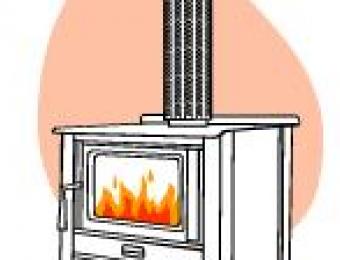Where you place your heater in your home can dramatically affect the quality of heat it produces. The placement will depend on a number of things; the type of heater, the purpose it serves (e.g. heating a room, heating a particular space), and how your furniture's laid out.
Where to install heating ducts

Central heating is really quite simple to plan – as long as you have a duct going to the room that you want heated then the only decision you'll need to make is whether you're installing the vent in the floor, the wall or the ceiling. The floor and the ceiling are the most common options for heating ducts, simply because of the space required to install a vent. Heater vents do a better job when installed in the floor, although installing them in the ceiling will give you more options in future if you plan on moving your furniture around.
Heating vents should ideally be placed in an area where they can provide direct heat to sitting and work areas. You also need to make sure that the ductworks have been installed to adhere to Building Code of Australia (BCA) requirements, which state that you have to have a clearance of 400mm between the duct and your ceiling. This means that in some homes, particularly older ones, central heating is not an option because of a narrow ceiling cavity.
Where to install permanent space heaters
Space heaters, particularly those that produce convective heat (like gas heaters) should be installed so that they aren't blowing air directly onto a wall surface (as they might, for example, if they were positioned in a corner). These types of heaters should be placed so that they circulate air wherever it's needed, and so that they aren't too close to where people might sit. If you intend to install a flued gas heater, make sure that you consider where the flue will be installed, and how close that might be to the neighbours' houses. Flues must clear your roofline by a minimum of 600mm, and must be at least one metre taller than any neighbours within 15 metres of your property.
Wood heaters are normally positioned so that they're far enough away from couches or dining tables to ensure the heat they give off doesn't make things uncomfortable. Chimneys positioned on the exterior wall of a home are said to be prone to greater build-up of creosote.
If you're installing a radiant bar heater in you bathroom, it's a good idea to install it fairly high on the wall to ensure that there's no danger of it coming into contact with water, or of anyone accidentally touching it.
Where to position portable heaters
There are a few tips and tricks that you can use to ensure proper heating performance from you portable heater. For example, the closer to can put the heater to the ground, the better. Don’t put it on a desk or table - heat rises, so the lower it is the more air there is to warm. You should also make sure that there is plenty of space on either side of a fan heater. Blocking the airflow to a fan heater can cause it to overheat, and potentially to catch fire. Likewise with bar heaters - because they are so hot, if they come into contact with anything there's a serious risk of fire.
Finally, you shouldn’t put a heater near an open window, as the incoming air will reduce its performance capabilities.





